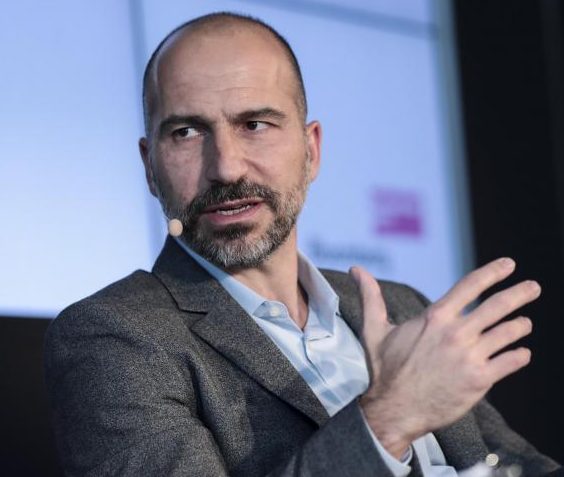July 24, 2020

Dara Khosrowshahi is facing harsh headwinds in his post as chief executive of Uber, as the money-losing firm confronts market doubts about its future.
Khosrowshahi, 50, was chosen in 2018 to take over the troubled firm, which faced deep internal problems stemming from the unorthodox ways of its founder, Khosrowshahi’s predecessor. Khosrowshahi quickly tackled those issues and won plaudits for his leadership. But he now he is facing more fundamental challenges.
Faced with questions about whether Uber can make money and a souring environment for unprofitable tech firms, Khosrowshahi has laid off more than 1,000 workers in three rounds of job cuts. He has ousted some top executives, and board members have left. And in recent emails to employees, he has said Uber’s teams are “too big,” are producing “mediocre results” and that the company “needs to get its edge back.”
Inside Uber, managers are quibbling over expense reports and tighter budgets, according to four current and former employees who talked anonymously to The New York Times. Executives have asked employees to suggest perks they are willing to give up. Some workers have been told they need to stretch themselves even thinner in the wake of layoffs.
Employee frustration over the belt-tightening has been compounded by Uber’s declining stock price, which in March was about 30 percent below the company’s $45 initial public offering (IPO) price. That affects how much many workers will reap from their company stock. It all adds up to a difficult few months for the most prominent tech company to go public in 2019. An IPO was supposed to be a crowning moment for Uber, but its tribulations show that the aftermath has been far from easy, putting Khosrowshahi on the defensive and under pressure to perform.
The company posted a record $5.2 billion quarterly loss and slowing growth in August. One Wall Street analyst has publicly called Uber’s performance a “horror show.” “They need to show to the market that underneath this pile of massive losses, there’s actually a really attractive business model,” Mark Mahaney, an analyst at RBC Capital, told The New York Times. “First is, show us the profits. Second, it’s show us the growth.”
When Uber went public under Khosrowshahi’s initiative May 10, its stock immediately tanked, in an embarrassment for the heavily hyped offering. At the end of May 2019, Uber reported a quarterly loss of $1 billion, renewing questions about whether the ride-hailing service could ever turn a profit.
In June 2019, Khosrowshahi moved to take more control of Uber’s day-to-day operations. That month, he ousted his chief operating officer, Barney Harford, whom he had previously worked with at travel site Expedia and had personally recruited to Uber.
Khosrowshahi started more directly managing some of Uber’s businesses, including the Uber Eats food delivery division, said two people familiar with the situation. At divisions like Uber Eats and Uber Freight, its shipping business that pairs truck drivers with freight, managers pushed employees to land deals with flagship brands to bolster revenue, current and former employees said.
Khosrowshahi began holding a new type of employee meeting in August, called “Global Tech Days.” In the all-day meetings, which are set to take place monthly, he reviewed Uber’s progress in detail with teams, according to employees. The gatherings often stretched late into the evenings, with participants required to sort out the problems raised in the meeting before they departed.
Then in November, Khosrowshahi tripped over his own feet. In an interview, he was asked about the presence of a Saudi government official on Uber’s board in light of the murder of Saudi journalist Jamal Khashoggi. Khosrowshahi called Khashoggi’s killing a “mistake” by the Saudi government. He quickly realized his own mistake and called the interviewer in an effort to call back his remarks.